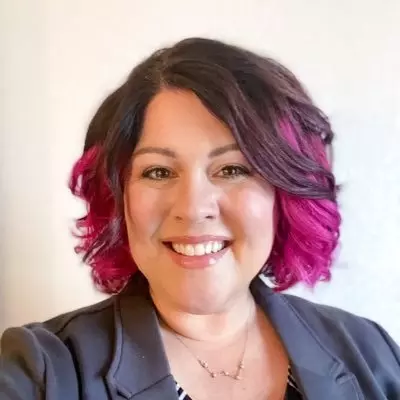This is the second installment in our two-part Q&A series where we sat down with our Sr. Director of Diversity, Equity, and Belonging at Ultimate Software and Kronos, Cara Pelletier, to get her advice on how HR can support their Black employees.
Meet Cara Pelletier, MA

Role: Sr. Director, Diversity, Equity, and Belonging at Ultimate Software and Kronos
Pronouns: She, her
Specialties: Diversity, Equity, and Belonging, Leadership Development, Organizational Culture, Leading Through Change, Organizational Design, Talent Strategy, Curriculum Development, Classroom and Virtual Facilitation
Q&A part 2: How HR can support lasting change
In the first part of our conversation, we discussed how HR can support Black employees right now, and in this second piece we start looking forward and discuss how HR can establish long-term strategies to continue to support their organization’s Black employees and spark lasting change.
Rachel Rapoza (RR): What are some strategies HR could develop to ensure Black employees are set up for long term success at their organization?
Cara Pelletier (CP): When I think about talent development in organizations and how we identify high potential talent, my question is, “Who's in the room making those decisions and do we have set criteria for how those decisions are made?”
A lot of times how promotion decisions are made in an organization feels like a mystery or a black box. So demystifying the process and giving employees clear guides on how they can move from an individual contributor role up to a manager role and then to a senior manager role enables employees to understand how they can get there.
In addition, in the conversations where you're doing talent management reviews and identifying high performing and high potential talent, who is the voice representing diversity in that conversation? At a lot of organizations, the further up the ladder you go, the less diversity you see. So the question that HR leaders should be asking is, “Why? Why is it that our individual contributors are maybe very diverse, but then at the next level, the manager level, suddenly you have a drop off in women or in people of color or both? And then how about director and senior director and VP level?”
Put a policy in place that supports having representation across all levels of management.
Then HR can start developing processes and policies that could make sure that leadership development programs are not just open to everybody, but really equitable and reflective of the diversity of the organization as a whole. And sometimes that might mean deciding that, at your next management training cohort, you say, “you know we are 80% white in our organization, so eight of these spots are going to be reserved for qualified white people, and two of these spots are going to be reserved for qualified people of color,” because your organization wants to put a policy in place that supports having representation across all levels of management.
It's not just about being kinder and having better conversations, it's about looking at your policies and processes in such a way that you are actually advancing equality on a daily basis. And there are a number of really good books on that topic – one of them is What Works – Gender Equity by Design by Iris Bohnet from the Harvard Kennedy School. While her book focuses on gender equality, you can really use it to understand how you design your processes to get rid of the unconscious bias that keeps people from moving up and succeeding.
There's also another book that I haven't cracked yet – Inclusion Nudges by Lisa Kepinski and Tinna C. Nielsen, which looks like everything in the entire talent development process from higher to retire, and asks how can we nudge this process towards equity and equality for everybody. I’m looking forward to reading this, because it has really specific actionable information, for example, how to reduce men's fear of women in leadership goals. So again, it's not trying to make people less racist or sexist, it's about making your processes more equitable.
RR: You mentioned this briefly, but what responsibilities do HR teams have to set metrics, quotas, and/or restructuring plans? What does this work look like and what are the roadblocks? Especially quotas – sometimes quotas are the first way into diversity work many think of, but is it the best option?
CP: A lot of organizations don't call it a quota, because there is so much stigma attached to that word. What they set are aspirational targets, and some organizations will hold leaders accountable to that – not by way of their base pay, but through their bonuses. So leaders are incented to make better decisions.
If you look at something like the DiversityInc Top 50, which is one of the indices that neither Ultimate nor Kronos have hit yet but we're working hard toward as our newly combined company moves forward together a lot of what they report on is around executive compensation tied to diversity.
RR: Speaking of an organization’s maturity in the diversity, equity, inclusion, and belonging space – some organizations may not have any programs or strategies in place – where do you think they could start?
CP: I think those organizations should understand where they have the most work to do, and that will tell them where they need to start.
One of the ways that we measure where we have work to do is by using a solution in UltiPro, Perception. Ultimate has been using Perception for all of our internal culture surveys, and what that allows us to do is take a look at the qualitative data in our organization to find out where we might have issues.
It's easy to see where there are numbers issues, but what's not easy is spotting the reasons why.
When you're looking at data, it's really easy to look at our diversity breakdown as an organization and see where there are numbers issues, including at different levels of the organization. But what's not easy to spot are the reasons why – so understanding the structural barriers or maybe cultural barriers that are there is critical. So by surveying your employees and asking their sentiment on a number of topics, you can start to get a clear picture of where you might want to do some work when you look at the numbers and what people are saying.
So over the last two years at Ultimate we asked three questions on a pulse survey related to belonging which are on a scale of “Yes, I do.” to “No, I don't.”:
- I feel like I belong here.
- Perspectives like mine are included in decision making.
- I can voice a contrary opinion without fear of repercussions.
The second and third questions are really good measures of belonging because they’re helping us understand if employees think their voice matters and do they feel safe enough to share what they really think about a topic. And Kronos, before our merger, asked similar questions to Kronites – including exactly the same “I feel as if I belong here,” as well as “Kronos makes it easy for people from different backgrounds to fit in and be accepted” and “Kronos is genuinely committed to attracting, developing, and keeping a diverse workforce.” Today we’re actively working on standardizing on new belonging questions as one combined company, including ways to hold leaders accountable.
Outside of having a software solution with natural language processing and AI, HR can have a series of roundtables or they can build an anonymous survey in any online tool to open the door for people to start having conversations about this topic – again, with the caveat that you’re probably going to find more issues than you imagine, and if you ask, please be prepared to do something about it.
Another easy thing that HR could do is to find out if there are employees who are interested in starting communities of interest (COIs) or employee resource groups (ERGs). Typically, people want an ERG if they don't feel supported or connected in a certain area. So, if there are a lot of employees saying “we need an ERG for Black employees,” this is another way to identify where there’s some underlying work that needs to be done and another way of opening up that conversation.
RR: And lastly, what if there is pushback from leadership on expressing support for/providing resources to Black employees? What are your recommendations on how to approach and work through that?
CP: I think it's important to understand where the pushback is coming from. There are lots of potential reasons why someone might push back on it, for instance, one could simply be that we're asking leaders to have conversations that they're not prepared for, and so there is a great degree of fear – some leaders are afraid that they're going to get into a conversation and expose what they don't know. So I wouldn't immediately diagnose pushback as somebody harboring racist intent.
Diversity and inclusion work is inherently progressive, which can cause discomfort.
There are a lot of reasons why it could be uncomfortable for someone to have these conversations. And I would also say that when you're doing diversity and inclusion work, the work that we're trying to do is inherently progressive. Just by definition, pushing against what exists today and trying to build something inside our company that doesn't always exist outside – that is progressive. It's not like we have this perfectly equitable society where everybody is valued and has equal opportunity to succeed outside of the four walls of our organization.
There are going to be some level of people in your organization who don't share the same values. So they are going to have to grapple with working for an organization that's asking them to take a different position than they might personally – and that's really hard.
There may be pushback from people who feel like the work that they're being asked to do now does not coincide or align with their own personal values. And I think it's important for leaders to be able to have the conversation and be able to separate the professional self from the personal self. There are lots of times, especially in HR, that we’re asked to do things that we may not necessarily feel great about. For instance, terminating an employee or doing layoffs. There are lots of times where we have to learn how to separate the personal from the professional.
If your company is actively taking a more progressive stance, you need to first respect that not everybody in your organization is going to agree with it, but you also need to equip them to be able to do that work in a way that allows them to respect the separation. And we are challenged with that, with some of our customers too, because a lot of our customers come from organizations that are less progressive, and so they might see the work that we're trying to do as being counter to or contrary to their values.
At the end of the day, it's about being able to navigate this in a way that still builds a valued and trusting working relationship while recognizing that there's going to be a difference in approach.
Conclusion: Next steps on the road to diversity, equity, inclusion, and belonging
We hope you’ve gotten some meaningful and actionable insights from our talks with Cara that you can take back to thoughtfully examine diversity, equity, inclusion, and belonging at your organization. Ultimate and Kronos are committed to continuing the fight for kindness, respect, and equality, and we would love to have your voice as part of that conversation. Please visit our Equity at Work Social Room on LinkedIn, part of our Equity at Work Council, to join other professionals in helping to create a future of work that works for all people.



